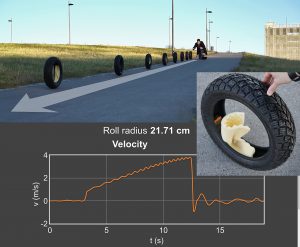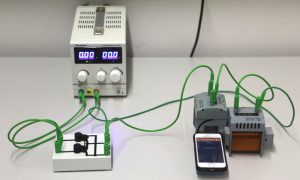There is new event for those in south Germany as we will support a teacher training about smartphone experiments with phyphox in Freiburg at the end of June.
Month: May 2017
Hysteresis curve of an iron core
Christoph Holz from the University of Münster has just added a fascinating new experiment to our Wiki: Hysteresis curve of an iron core.
He has created a phyphox experiment file which allows you to measure a hysteresis curve of a coil with an iron core using your phone’s magnetometer. In order to measure it as a function of the current through the coil he uses a simple method that could certainly be applied to other experiments as well – He simply uses a second coil without an iron core, which produces a magnetic field on another axis of the magnetometer, which is proportional to the current.
This is the first extensive contribution to our Wiki and this is exactly how the Wiki is meant to be used. If you have an experiment you would like to share, simply create a user account and start adding your article/experiment/note to the Wiki. Even if it is just a small contribution, we will welcome it glady.
phyphox visits the USA
There will be a short contributed phyphox talk and a poster at the AAPT Summer Meeting in Cincinnati from July 22nd till July 26th. If you want to meet me and discuss smartphone physics, I will be happy to meet you at a convenient time at the meeting (the poster session might be a little short and busy) – just send me an email (kuhlen@physik.rwth-aachen.de).
Tracking the speed of a wheel

We have just published an article in the German journal “Physik in unserer Zeit”, presenting phyphox and discussing its abilities to create customized experiments and remote control. We demonstrate this using a wheel rolling down a hill with the smartphone placed in its rim. In this experiment, phyphox autonomously determines the radius of the wheel and its velocity (similar to the roll experiment shipped with phyphox).
Physik in unserer Zeit 48, 148-149 (2017) (article in German)
If you want to try the experiment described in the article, you can open it directly in phyphox or download it. The experiment expects the phone to be as close to the outer radius of the wheel as possible and rotate about the x axis.

